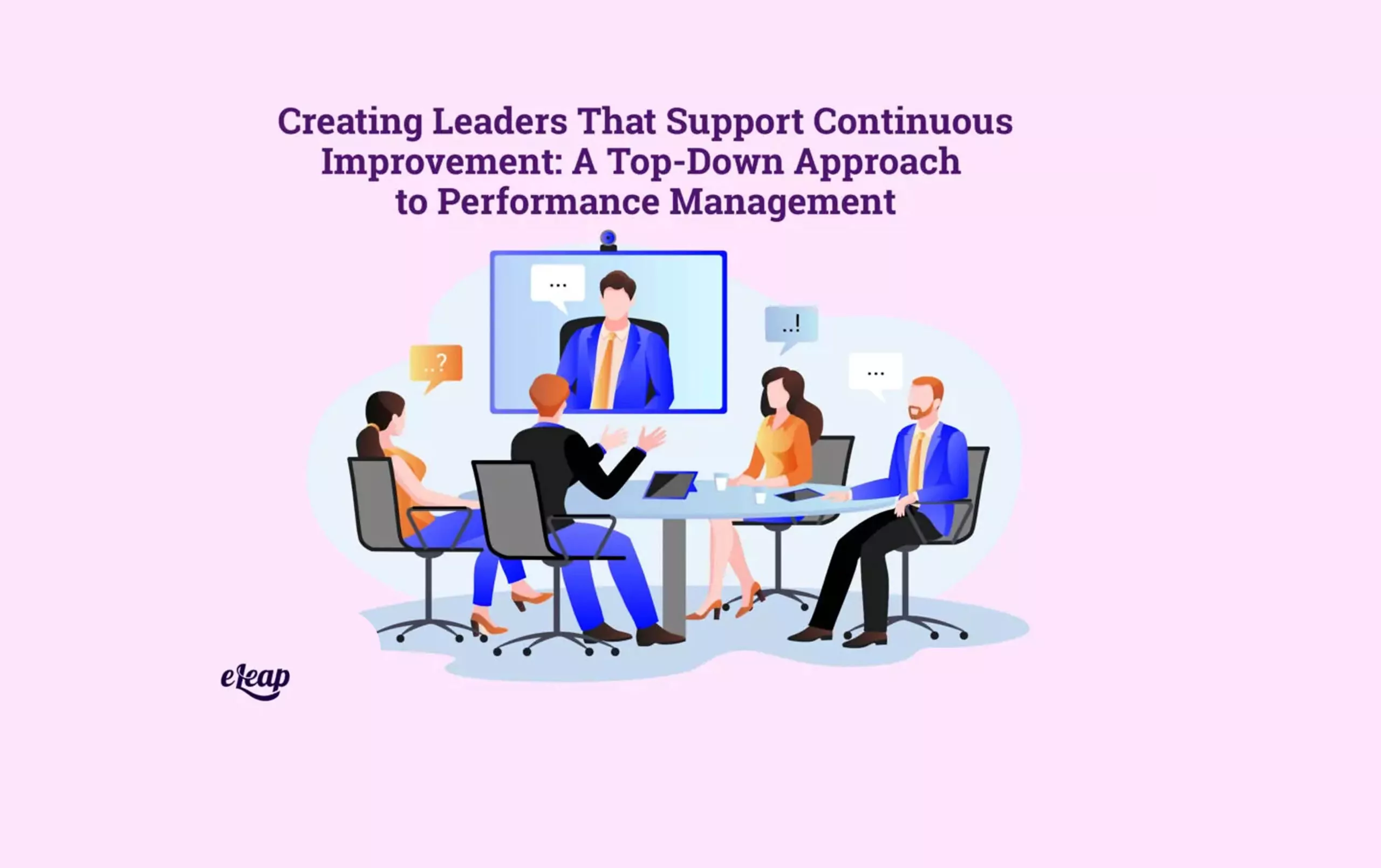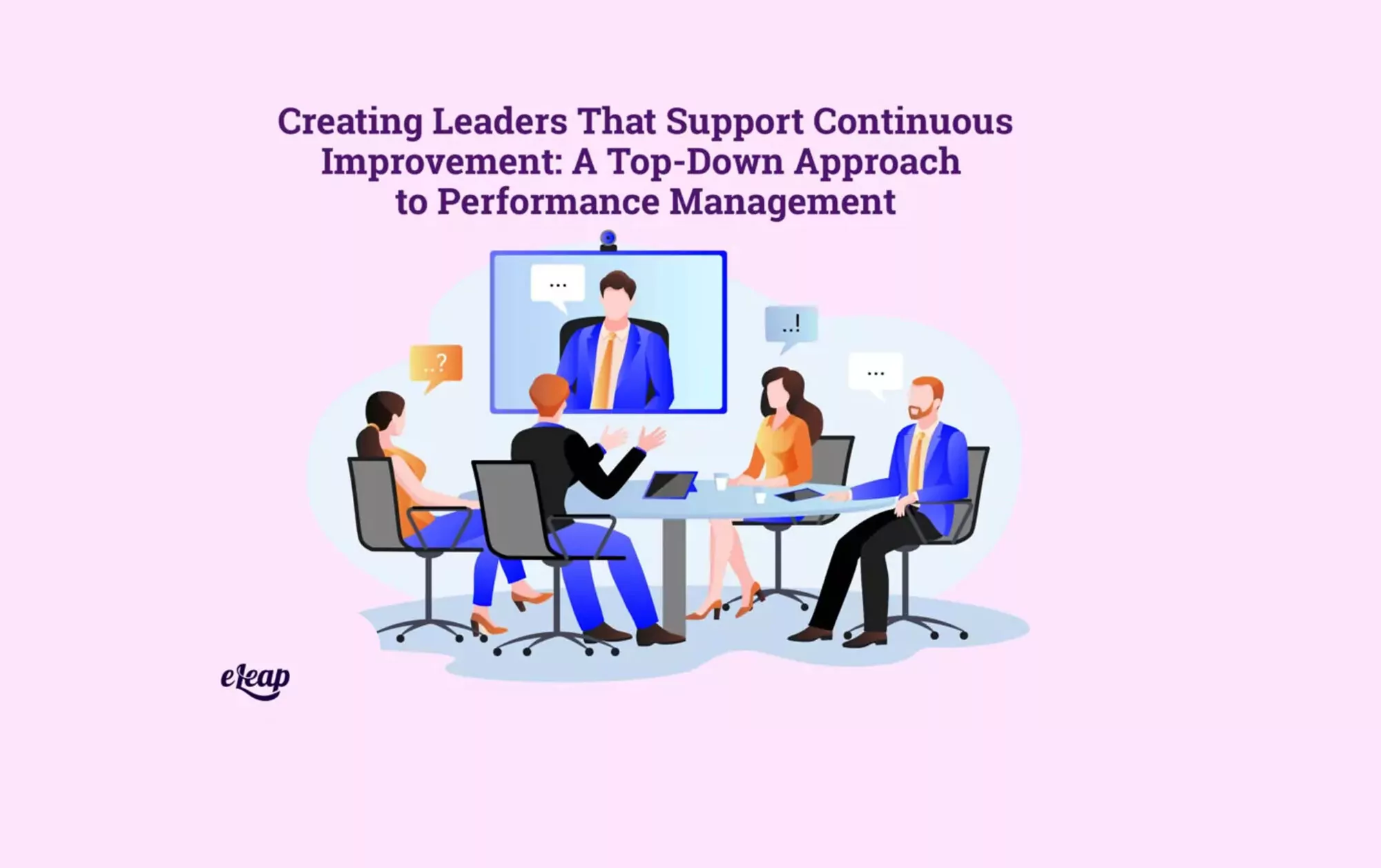Creating Leaders That Support Continuous Improvement: A Top-Down Approach to Performance Management

Often, performance management seems to take a bottom-up approach. That makes a lot of sense. After all, no business can grow, thrive, and serve its end customers without the people that actually make up the company.
However, managing employee performance in this way is just part of the equation. It is also important to create leaders capable of supporting continuous improvement across their domains. Achieving that will require leaders and managers to learn and then practice new behaviors, but that can be challenging.

Humans are creatures of habit. During times of stress, we fall back into old ways of doing things, routines that we’ve learned over long years of practice. Leadership roles are inherently stressful, so leaders and managers often revert from new, partially-mastered behaviors to old ones that may not support performance across the areas they manage.
To help change the situation, organizations can train the trainer, so to speak. With modern digital tools and access to accurate analytics, it becomes possible to create leaders that support continuous improvement by adopting standard work practices based on behaviors that drive better outcomes. In this post, we will discuss what you need to know.
Set a Day in the Life
One of the first things organizations must do is create routines for their leaders and managers to follow. This allows senior leaders to insert wanted activities and desired behaviors into the schedule, ensuring that leaders can absorb them and, eventually, incorporate them unconsciously on their own. So, senior leaders will need to define what desired behaviors involve daily.
Some of the most common behaviors baked into daily schedules can include the following:
- Reviewing performance/productivity reports from the previous day
- Join other managers and supervisors for walk-throughs or discussions
- Visit different teams/departments each day to delve into issues covered in shift/team huddles
- Identify multi-department challenges and escalate them at weekly huddles
- Note opportunities for one-on-one coaching
- Attend problem-solving sessions and address recurring issues
- Conduct team analyses during meetings/huddles
Now, it’s likely that these behaviors will take up a very large percentage of a leader’s day. That makes it imperative that senior leaders offload some or even most of the leader’s previous responsibilities, particularly low-value activities that can be delegated to others or that can be automated. The goal here is to free a leader’s time to focus on high-value, performance-focused issues, not to bog them down with yet one more thing to do on an ever-growing list of tasks. That way lies frustration and eventual burnout, and it will fail to drive improved outcomes.
Senior leaders will need to make some hard choices – what tasks can be taken off the leader? How can they protect the leader’s time so it can be used correctly? What can be shared with other leaders or delegated to other managers? Is it better to create a new position, either above or below the current leader, to facilitate better delegation capabilities or responsibility-sharing?
In addition to the insight, opinion, and expertise of senior leaders, digital technology can be highly beneficial here. A digital performance management system, for instance, particularly a cloud-based system, can help to surface critical insights, track metrics, and enable data-driven decisions that ultimately support improved performance.
Pay Attention to Time Usage
Leaders have limited amounts of time each day. Every task, every responsibility, every interaction, from a moment at the water cooler to a meeting that runs over by 15 minutes, erodes what a leader is capable of achieving in a given day. However, there’s more to this situation than just trimming the fat and freeing up time.
For a leader to lead, they must be physically present with their teams. They must see in person how those team members are working. However, seeing is just part of it – they must also understand what they’re seeing and be able to connect the dots. A leader should be able to connect behaviors they witness with performance hurdles and goals. It’s all about surfacing critical insights that allow your leaders to dig deep into the heart of performance challenges.
Data is everywhere today, but the sheer glut of information works against your leaders. They must find ways to identify valuable nuggets amidst a sea of less valuable information (less valuable to leaders, at any rate). Again, technology comes to the rescue. A cloud-based performance management system makes it simple to examine, parse, clean, and then surface mission-critical information that can then be used by leaders. It can also free up their time dramatically.
Don’t Enshrine Changes
Improved behaviors are important. However, they cannot be enshrined as the “end all be all.” All behaviors should be subject to ongoing scrutiny. No behavior or activity should be considered “sacred” or above scrutiny.
Leaders (including senior leaders) should continually pause and take stock of behaviors and outcomes. Are new behaviors being followed correctly? If so, are they delivering the intended outcomes? If not, why not?
Be willing to remove any behavior (new or old) that isn’t performing to expectations or driving the results you need to see. Continuous improvement is just that – an ongoing process of change in which every process is in flux to some degree or another. Nothing is set in stone, and everything can and will eventually be replaced with newer, more streamlined, or more effective behaviors over time. The trick is to do this promptly.
Leaders Must Change, Too
Finally, leaders must realize that change is as good and necessary for them as it is for the employees they manage. No one is immune to the need to evolve and grow. What worked in the past for managers and leaders is unlikely to work forever. With a growth-focused mindset, leaders are prepared to shed old ways of doing things and adopt better behaviors for themselves without friction, and that example will be mirrored by those they lead.
Ultimately, continuous improvement is possible, but it requires performance management steps at both ends – employees but also leaders. The right technology can be instrumental in your success, though. Contact eLeaP to learn more about our performance management system and the role it can play in your growth.